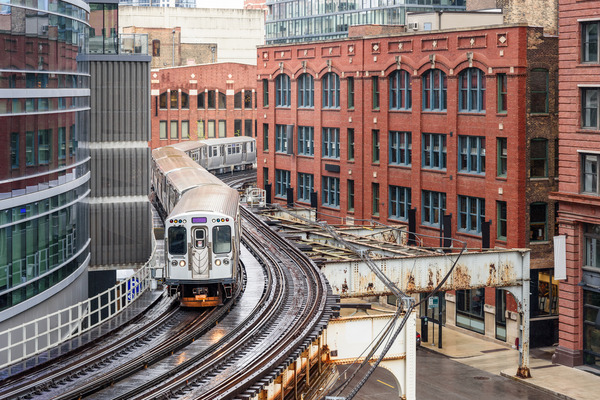The hidden dangers of Chicago’s aging infrastructure: Legal insights on catastrophic injury liability
Catastrophic Injury - September 19, 2024 by Horwitz, Horwitz & Associates
Chicago’s expansive public infrastructure is the city’s backbone, facilitating transportation, commerce, and daily life for millions of residents and visitors. However, when roads, bridges, public transportation systems, and other public facilities are not properly maintained, they can become hazards. Defective or poorly maintained infrastructure can lead to catastrophic injuries, leaving victims with life-altering consequences.
The Chicago catastrophic injury lawyers with Horwitz, Horwitz & Associates are proud to represent individuals who have suffered catastrophic injuries due to negligence, including failures in public infrastructure.
Keep reading to learn how Chicago’s public infrastructure can contribute to catastrophic injuries and how injured parties can seek compensation.

How public infrastructure can contribute to catastrophic injuries
Public infrastructure plays a vital role in the safety and mobility of Chicago’s residents. However, when infrastructure fails, the results can be devastating. Some common examples of how public infrastructure can lead to catastrophic injuries include the following.
Road, bridge, and waterway defects
Chicago’s roads, bridges, and waterways are essential for transportation but can pose serious risks if not properly maintained. Potholes, uneven pavement, cracks in road surfaces, and deteriorating bridges can cause dangerous accidents, particularly for cyclists, motorcyclists, and pedestrians. Due to infrastructure failures, motor vehicles are also at risk of collisions and rollovers, leading to serious injuries.
Sidewalks and pedestrian walkways
Broken or uneven sidewalks, cracked pavement, and missing safety features like handrails or lighting can put pedestrians in harm’s way. Trip-and-fall accidents resulting from poorly maintained walkways can lead to catastrophic injuries such as traumatic brain injuries (TBIs), spinal cord injuries, and broken bones.
Public transportation accidents
Chicago’s public transit system, including the Chicago Transit Authority (CTA) buses and trains, is essential for many. However, defective or poorly maintained vehicles, inadequate safety protocols, and dangerous platform conditions can result in severe accidents, from train derailments to bus crashes. Catastrophic injuries, including amputations and TBIs, are not uncommon in these situations.
Dangerous intersections and signage issues
Traffic signals, signs, and crosswalks are key components of safe navigation. When traffic lights malfunction, signs are obscured, or crosswalks are faded, drivers and pedestrians may become confused or unaware of their surroundings. This can lead to devastating car accidents, pedestrian injuries, and cyclist collisions.
Legal perspectives on liability for public infrastructure injuries
Determining who is responsible can be challenging when catastrophic injuries occur due to infrastructure-related accidents. Depending on the circumstances, government entities, private contractors, and even third-party businesses may be held liable. Here are key legal perspectives on liability in public infrastructure cases.
Government liability
Municipalities and other government entities are responsible for maintaining public infrastructure, but holding the government accountable for negligence is more complicated than suing a private party. In Illinois, the Local Governmental and Governmental Employees Tort Immunity Act governs cases involving injury claims against public entities.
This statute provides certain immunities to government agencies, which means that the government may not always be held liable for every infrastructure-related injury. However, when it can be proven that the government entity failed to properly maintain roads, bridges, or public transit systems, or was aware of a dangerous condition and failed to address it, injured individuals may be able to pursue compensation.
A key step in these cases is proving negligence, which requires showing that:
- The government entity had a duty to maintain safe infrastructure.
- The entity breached that duty by failing to fix known hazards.
- The breach directly caused the catastrophic injury.
- The injury resulted in damages, such as medical expenses, lost wages, and pain and suffering.
Special rules for filing claims against government entities
In cases involving government liability, plaintiffs must follow specific rules and deadlines when filing a claim. For example, in Illinois, injured parties must file a notice of claim within one year of the injury. Missing this deadline could result in losing the right to pursue compensation. At Horwitz, Horwitz & Associates, we ensure that all legal procedures are followed to preserve our clients’ rights to recovery.
Contractor and third-party liability
In some cases, the government may contract with private companies to handle the construction, repair, or maintenance of public infrastructure. If an injury results from the negligence of a private contractor or third party, such as improper road repairs or unsafe construction zones, those companies may be held liable for damages.
In these cases, injured individuals can file a third-party personal injury lawsuit to recover compensation for their injuries. These claims often include seeking compensation for medical bills, lost wages, pain and suffering, and long-term care needs.
Comparative negligence
In Illinois, comparative negligence laws apply to personal injury cases, including those involving public infrastructure. This means that if the injured party is found to be partially at fault for the accident, their compensation may be reduced by their percentage of fault. However, if the injured party is found to be more than 50% at fault, they may be barred from recovering any compensation.
It is essential to work with experienced legal representation to mitigate claims of comparative negligence and ensure that liability is appropriately assigned to the responsible parties.
How Horwitz, Horwitz & Associates can help
If you or a loved one has been injured due to unsafe infrastructure, contact Horwitz, Horwitz & Associates for a free consultation. Let our experienced attorneys fight for the compensation you deserve and help you navigate the complex legal landscape of infrastructure-related injury claims.


